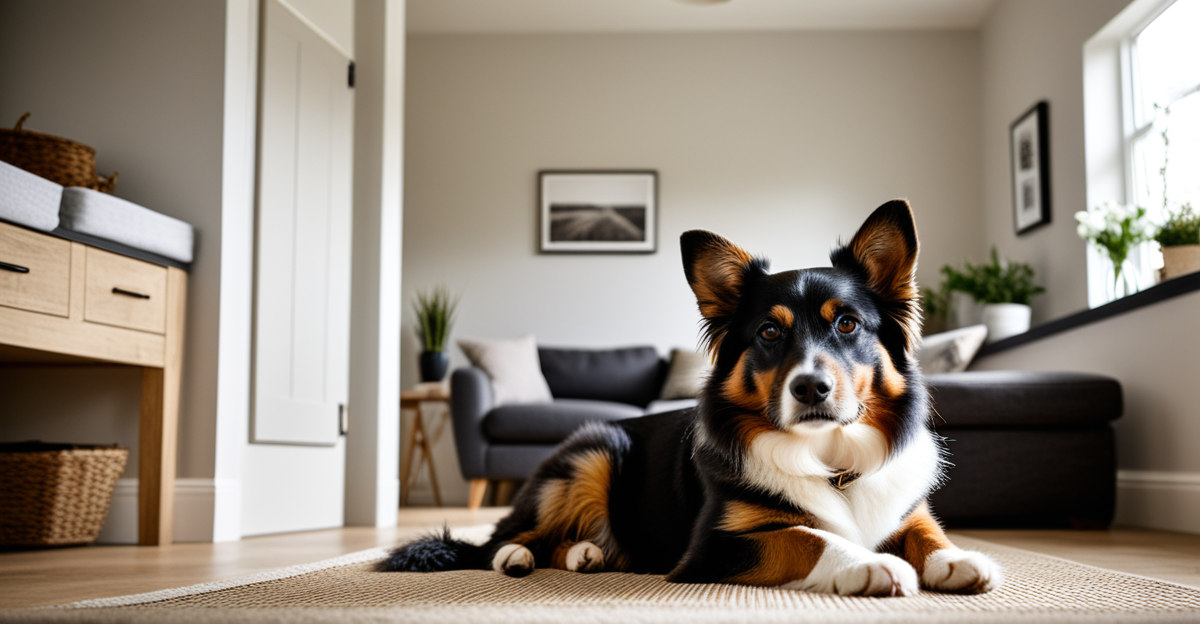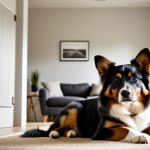Essential Steps for a Pet-Friendly Home in the UK
Creating a safe space begins with thorough pet-proofing UK homes. Every room should be assessed for potential hazards such as exposed electrical cords, toxic cleaning products, or unsecured windows. In the UK, cold tiles or slippery floors can pose risks, so securing these areas or adding rugs helps prevent accidents.
In typical UK homes, electrical cords often run along skirting boards or lie near doorways. Using cord protectors or relocating cords keeps curious pets safe from chewing hazards. Cleaning products containing chemicals common in UK households must be stored out of reach to avoid accidental poisoning. Windows with low sills should have secure screens or locks to prevent falls, crucial for cats and smaller animals.
Also to discover : How Can UK Residents Adapt Homes for Eco-Friendly Living?
The next step involves creating a dedicated pet zone indoors. This space should be comfortable, secure, and easily accessible. For example, setting up a cosy corner with beds, toys, and water bowls allows pets to retreat safely. This zone acts as a refuge during busy family activity, reducing anxiety and ensuring safe living for pets. Thoughtful pet-proofing practices tailored to UK homes ensure long-term wellbeing and strengthen the bond between pet and owner.
Understanding UK Pet Laws and Rental Guidelines
Important insights to navigate pet policies and legal responsibilities
Also to discover : Strategies to Maximize Space Efficiently: How Can You Make Small Rooms Feel Larger?
Navigating UK pet regulations starts with understanding the key rules that govern pet ownership. Most homeowners in the UK must comply with local council laws about pet welfare, licensing (such as dog microchipping), and noise control. Knowing these policies ensures safe living for pets and prevents legal issues.
When living in rental properties, rental property pet rules are especially crucial. Many tenancy agreements include clauses that restrict or allow pets under specific conditions. Tenants should carefully review contracts and negotiate pet permissions before moving in. Some landlords may require additional pet deposits or references, so open communication is vital.
Registering pets is another important step for UK residents. For dogs, microchipping is mandatory by law, linking your pet to your contact details if lost. Owners have responsibilities including providing proper care, vaccinations, and complying with control orders like dog leash laws in public spaces. Understanding these requirements supports responsible UK pet ownership and promotes a harmonious relationship between pets, owners, and neighbours alike.
By knowing UK pet regulations and rental expectations, owners can confidently maintain pet-friendly homes while meeting legal standards and ensuring the wellbeing of their beloved animals.
Essential Steps for a Pet-Friendly Home in the UK
Effective pet-proofing UK homes demands a detailed room-by-room safety assessment. Identifying common hazards early prevents injuries and promotes safe living for pets. For instance, exposed electrical cords pose serious risks; securing these with cord protectors or rerouting them reduces chewing dangers—an especially UK-relevant concern given typical wiring layouts along skirting boards.
Household cleaning products often contain substances harmful to animals. Storing these securely out of reach aligns directly with UK pet safety standards, preventing accidental poisonings. Additionally, windows with low sills require special attention—locks or screens must be installed to avoid falls, particularly for agile cats or smaller pets.
Creating a dedicated indoor pet zone enhances comfort and emotional wellbeing. This space should be quiet, safe, and equipped with essentials like bedding, toys, and water bowls. Such zones reduce stress during busy household moments and support safe living for pets by offering refuge and familiarity within UK homes. Together, these targeted measures ensure that pet-friendly adaptations are thorough, practical, and tailored to the specific demands of British living environments.
Essential Steps for a Pet-Friendly Home in the UK
Creating a safe living for pets begins with comprehensive pet-proofing UK homes by carefully assessing each room for hazards unique to British households. Electrical cords often run visibly along skirting boards and doorways; securing these cords with protectors or relocating them prevents chewing risks that are common in the UK’s typical wiring arrangements.
Household cleaning products pose additional threats—storing all chemicals securely in locked cupboards or high shelves adheres to UK pet safety standards by minimising poisoning risks. Windows with low sills are another frequent concern. Installing secure locks or mesh screens is crucial to avoid falls, especially for agile cats or small pets who can jump or squeeze through narrow spaces.
Beyond hazard management, establishing a dedicated indoor pet zone supports comfort and wellbeing. This area should be quiet, secure, and stocked with essentials like beds, toys, and water bowls. Such a zone offers refuge from household activity, promoting safe living for pets in busy UK homes. Effective pet-proofing UK homes combines practical safety measures with thoughtful space design to ensure pets remain protected and comfortable in their British environment.
Essential Steps for a Pet-Friendly Home in the UK
Effective pet-proofing UK homes starts with a thorough hazard assessment in every room. Identifying risks such as exposed electrical cords, access to toxic cleaning products, and unsafe windows is vital to ensure safe living for pets. Electrical cords commonly run along skirting boards in UK homes, making them particularly vulnerable; securing or rerouting these cords helps prevent chewing injuries.
Household cleaning products pose serious poisoning risks if left accessible. Store all chemicals in high or locked cupboards away from pets. Windows with low sills are a frequent hazard; installing secure locks or fine mesh screens stops falls or escapes, especially for agile cats or smaller animals.
Creating a dedicated pet zone inside the home adds much-needed comfort and security. This space should include essentials like a cozy bed, toys, and fresh water, giving pets a familiar refuge away from busy household activity. A well-designed pet zone supports UK pet safety by reducing stress and encouraging calm behaviour.
Together, these targeted steps form the foundation of pet-proofing UK homes, combining practical safety measures with thoughtful space planning to promote lasting safe living for pets within British households.
Essential Steps for a Pet-Friendly Home in the UK
Successfully pet-proofing UK homes begins with a detailed hazard assessment in every room to ensure safe living for pets. Key risks in British households include exposed electrical cords, common along skirting boards, which should be secured or concealed to prevent chewing injuries. Equally important are cleaning products, often stored in accessible cupboards; these require relocation to high or locked cabinets to reduce poisoning risks and comply with UK pet safety standards.
Windows with low sills demand particular attention. Installing sturdy locks, safety screens, or fine mesh prevents falls and escapes, safeguarding especially agile cats and smaller pets. This is a critical element of pet-proofing in the UK context due to typical window designs in domestic properties.
Creating a dedicated indoor pet zone complements hazard reduction. This comfortable, secure area should contain essentials like cozy beds, engaging toys, and fresh water. Such a zone provides pets with a safe retreat from busy household activity, ultimately promoting calm and wellbeing.
Together, these foundational steps in pet-proofing UK homes weave practical safety measures with thoughtful space planning to uphold safe living for pets and reinforce responsible UK pet safety practices in everyday life.










